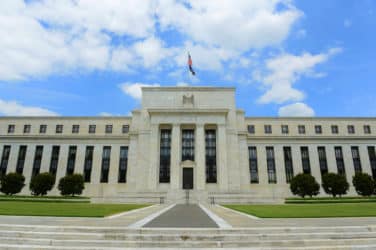

Goldman Sachs has gone live with the bank’s new tokenization platform and technology provider Digital Asset expects similar projects from other firms to go into production this year.
Yuval Rooz, co-founder and chief executive of Digital Asset, told Markets Media that Goldman Sachs going live is a huge achievement but more firms will implement similar platforms in 2023.
“This year is about execution,” added Rooz. “We have about 40 clients so it is about making sure that we continue to execute on their projects and at least 10 should go live this year.”
Goldman Sachs’ platform, GS DAP, went live one year into the bank’s engagement of Digital Asset.
Mathew McDermott, global head of digital assets at Goldman Sachs, said in a statement: “Our goal from the outset has been to help our clients realize the benefits of end-to-end digital lifecycle processing across tokenized assets, digital currencies, and other financial instruments.”
GS DAP was developed using Daml, Digital Asset’s smart contract language, and Canton, the technology firm’s privacy-enabled blockchain. Digital Asset describes Daml as the only smart-contract language and blockchain that allows sub-transaction privacy, as it defines who is entitled to see and who is authorized to change any given contract. Daml Finance is equipped with libraries, tools, and pre-built models to accelerate development of tokenized assets. Canton is an enterprise-grade interoperable blockchain for running Daml applications.
Great way to start 2023 by @digitalassetcom team! It’s exciting to see @Damldriven and Canton transforming the marketplace with companies like @GoldmanSachs. https://t.co/QitnjQn0ao
— Yuval Rooz (@YuvalRooz) January 10, 2023
In November last year the European Investment Bank was the inaugural issuance on GS DAP with a €100m digital bond. This was the first fully digitally native bond with same-day settlement and also the first syndicated digital bond issued by a public institution to be admitted on the Luxembourg Stock Exchange’s Securities Official List according to Digital Asset.
The platform reduced the typical bond issuance settlement time from five days after a trade, T+5, to same-day settlement, or T+0, at a speed of sub-60 seconds with cross-chain atomic delivery versus payment settlement.
Rooz highlighted other projects that have also gone live including German exchange operator Deutsche Börse’s digital post-trade platform, D7, and fintech Broadridge Financial Solutions’ distributed ledger repo platform.
“Broadridge is processing $1 trillion a month in repo and that number will grow,” said Rooz. “We want to get to 25% of the US repo market, which would be $1 trillion of transactions each day.”
Rooz continued that adoption of Canton as the preferred ledger under Daml has increased.
“We have a strong pipeline of people doing things around tokenization,” he said. “People are starting to understand that it is critical to make sure their core assets are as efficient as possible.”
?Hong Kong issues HKD $800M in tokenized green bonds – @GoldmanSachs tokenisation protocol GS DAP has been used for the bond
— LeadBlock Partners (@LeadBlockP) February 17, 2023
In addition, Rooz described the US cutting its equities settlement cycle by one day to T+1 as a great opportunity as firms need to ensure their post-trade processes are as efficient as possible to meet the shorter deadline.
ASX pausing blockchain project
A number of distributed ledger projects have gone live, but in November last year the Australian exchange group, ASX, said it will reassess all aspects of the post-trade replacement project following completion of an independent review, conducted by Accenture, and its own internal assessment.
Damian Roche, ASX chairman, said in a statement at the time: “After further review, including consideration of the findings in the independent report, we have concluded that the path we were on will not meet ASX’s and the market’s high standards. There are significant technology, governance and delivery challenges that must be addressed.”
We have issued a media release: ASIC – RBA further regulatory response regarding the ASX CHESS replacement program – https://t.co/cSWNMnGuuD pic.twitter.com/xJKddcKyaV
— Reserve Bank of Australia (@RBAInfo) December 14, 2022
Rooz said that since the news of ASX’s pause had been announced a global competitor had selected Daml and Canton for its post-trade platform, although the firm did pause to ask Digital Asset more questions.
“The Accenture report talked about the quality of the technology and, from our perspective, the technology did what it was supposed to do,” added Rooz. “I do think that you will see DLT as part of CHESS [ASX’s post-trade platform].”
He argued that large transformation projects are always very difficult and introducing new technology makes them even more challenging.
“I am absolutely upset about the outcome as a lot of good people have put a lot of effort into that project and want it to go out on time and be successful,” he said. “From that perspective, I’m disappointed but I don’t think that it is a testimony to the capability of the technology .”
FTX
There has also been more attention on the digital asset space, especially from regulators, following the bankruptcy of crypto exchange FTX.
“We don’t list unregistered securities or take customer deposits,” Rooz said. “However, crypto and blockchain gets intertwined but it is our job to highlight why it should not be the case.”
He argued that Digital Asset works with regulated institutions to make their businesses more efficient and all of Digital Asset’s projects have been implemented within the existing regulatory frameworks.
“This year the industry really needs to do a better job educating regulators,” added Rooz. “I would wish for regulators to have an appreciation that firms are able to use this technology purely to modernise financial services and increase efficiency.”
In August last year Digital Asset said it saw a significant year-over-year increase in customer growth in the second quarter, with the number of new customers tripling compared to the second quarter of 2021. The new customer relationships were driven almost entirely by an increasing interest in asset tokenization, with the tokenization of bonds proving to be one of the initiatives financial institutions are most eager to pursue.
Rooz said Digital Asset almost doubled revenues last year and is hoping for the same performance in 2023, despite the macro environment.
“You will see much more around Canton this year and more tokenization platforms going live,” he added.







